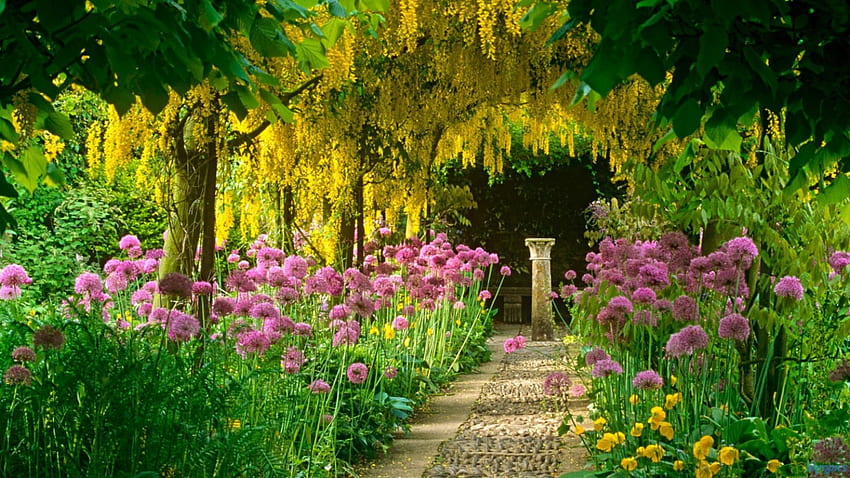
Green Thumbs Up: Unconventional Gardening Tips for Lush Blooms

Gardening is often seen as a straightforward endeavor involving digging, planting, and watering. However, true gardening enthusiasts know there is so much more to creating a vibrant and flourishing garden. Unconventional gardening tips can unlock new possibilities, allowing your blooms to thrive in unexpected ways. Whether you have a sprawling backyard or a small balcony, there are creative strategies to enhance your gardening experience and achieve lush results.
In this article, we will explore some innovative gardening tips that go beyond the basics. From unique planting techniques to natural remedies for pests, these ideas will breathe new life into your garden and help you cultivate an oasis of color and fragrance. Prepare to discover fresh insights that can transform your gardening approach, making it a more rewarding and fruitful hobby.
Choose the Right Soil
Selecting the right soil is crucial for the success of any garden. Different plants have varying needs, so understanding the type of soil that best supports growth is essential. For many flowering plants, a well-draining soil rich in organic matter is ideal. This allows for proper moisture retention while preventing waterlogging, which can lead to root rot. Consider a mix of garden soil, compost, and peat moss to create a balanced environment for your blooms.
Testing your soil pH and nutrient levels can provide valuable insights into its suitability for specific plants. Most flowering plants thrive in slightly acidic to neutral soils, typically with a pH range of 6.0 to 7.0. You can easily find home testing kits at garden centers. Adjusting your soil pH with natural amendments like lime for alkalinity or sulfur for acidity can encourage healthier growth and more vibrant blooms.
Lastly, don’t overlook the importance of soil aeration. Compacted soil can hinder root development and limit access to essential nutrients. Incorporating organic matter or using a garden fork to aerate the soil can enhance its structure. By ensuring your soil is not only the right type but also well-maintained, you lay the foundation for lush, colorful blooms throughout the growing season.
Creative Planting Techniques
One innovative approach to planting is using vertical gardens. This method allows you to maximize space and create eye-catching displays by growing plants upwards instead of outwards. You can use shelves, hanging pots, or trellises to support vining plants and flowers, making it perfect for small backyards or balconies. Vertical gardens not only save ground space but also create a unique aesthetic that enhances your outdoor area.
Enviroice on plants
Another unconventional technique is companion planting, where you strategically place certain plants together to promote growth and deter pests. For instance, pairing marigolds with vegetables can help repel harmful insects, while planting basil near tomatoes can improve their flavor and yield. This method not only helps in pest control but also encourages biodiversity, leading to healthier plants overall and a more vibrant garden.
Finally, consider using container gardening to explore unique planting combinations. Containers can be filled with a mix of flowers, herbs, and vegetables, allowing for diverse benefits such as ease of mobility and improved drainage. Experiment with different shapes, sizes, and materials for your containers to create beautiful arrangements that stand out. This technique also makes it easier to control soil quality and moisture levels, promoting lush growth.
Watering Wisely
Understanding the watering needs of your plants is crucial to achieving vibrant blooms. One of the most effective techniques is to water deeply but less frequently. This encourages roots to grow deeper into the soil, making them more resilient to drought. Aim to water in the early morning or late afternoon when temperatures are cooler, reducing evaporation. By allowing the soil to dry out slightly between waterings, you promote a healthy root system.
Always consider the specific needs of your plants. Different species have varying requirements for moisture, so it’s essential to research each type. For instance, succulents and cacti prefer sandy, well-drained soil with minimal watering, while tropical plants thrive in consistently moist environments. Using a moisture meter can help you gauge when your plants actually need water, preventing overwatering, which can lead to root rot.
Moreover, the technique of rainwater harvesting is an eco-friendly way to water your garden. Collecting rainwater in barrels not only conserves water but also provides plants with nutrient-rich moisture. Additionally, consider incorporating mulch around your plants to retain soil moisture and suppress weeds. This simple practice keeps your garden hydrated and minimizes the frequency of watering needed, helping to create lush, thriving blooms.
Natural Pest Control
Using natural pest control methods can effectively protect your garden without the use of harsh chemicals. One popular approach is introducing beneficial insects like ladybugs and lacewings, which prey on common pests such as aphids and mites. Planting a diverse array of flowers can attract these helpful creatures, turning your garden into a safe haven for them. Additionally, creating habitats that support these beneficial insects, such as flower beds and bee hotels, promotes a healthy ecosystem that helps manage pest populations naturally.
Another effective strategy is to use homemade remedies that deter pests while being harmless to your plants. A mixture of soap and water can be sprayed on affected areas to eliminate soft-bodied insects. Essential oils, such as neem oil or peppermint oil, can also be diluted and used as a natural deterrent against various pests. These solutions work by disrupting the pests’ life cycles or creating an unpleasant environment for them, making your garden less appealing to invaders.
Companion planting is another innovative method to control pests naturally. By strategically placing certain plants next to each other, you can create a natural barrier against unwanted insects. For instance, marigolds are known to repel nematodes and other garden pests. Planting garlic or chives near roses can deter aphids, while basil can keep away mosquitoes and flies. This approach not only helps protect your plants but can also enhance their growth by fostering a more balanced garden ecosystem.
Seasonal Maintenance Tips
As each season approaches, it’s important to adapt your gardening techniques to ensure your plants thrive. In the spring, focus on prepping your soil. This is the perfect time to add compost or organic matter to enrich the earth. Testing your soil pH can also provide insights into what nutrients your plants might need. Plan your planting schedule around your local climate and select seasonal flowers that flourish during this vibrant time of year.
Summer maintenance is essential to keeping your blooms lush. Regularly check for pests and diseases, as warmer weather can encourage their growth. Implement a consistent watering regime, particularly during dry spells. Mulching can help retain moisture in the soil and suppress weeds. This is also a great season to deadhead spent blooms, which encourages plants to produce more flowers and prolongs their blooming period.
As autumn arrives, transition your gardening habits to prepare for the colder months. Begin by collecting fallen leaves and using them to create a protective mulch layer around your plants. This not only helps maintain soil temperature but also provides additional nutrients as they break down. If you have perennials, now is the time to divide and replant them for stronger growth in the spring. Taking these steps will ensure that your garden remains healthy and ready for the next blooming season.

